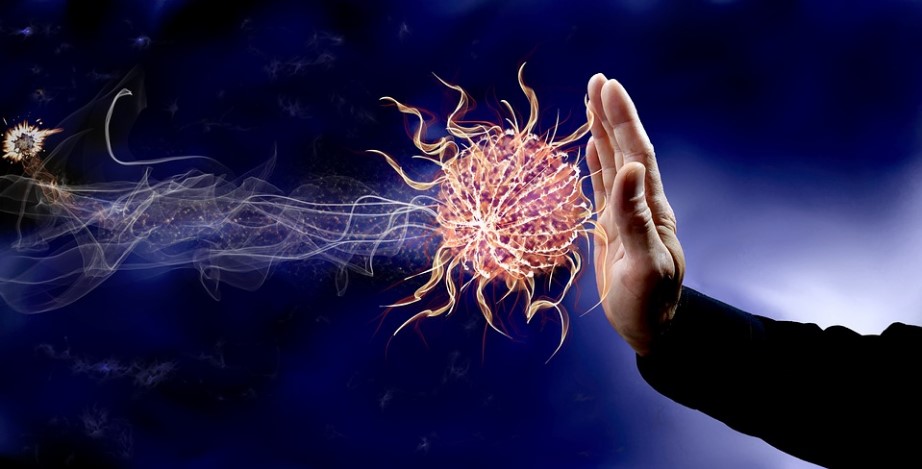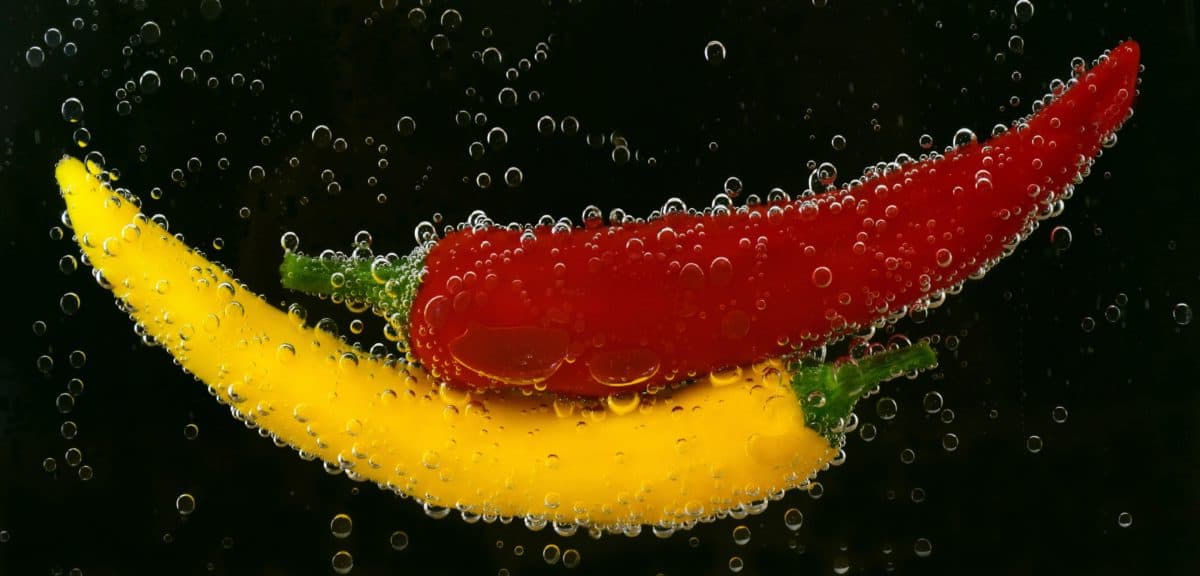Chilies not only heat up your food, they also fire up the immune system. We reveal which benefits chilies have for your health and which chili pepper is the hottest in the world.
What’s in the chili?
Humans can distinguish five tastes, spiciness is not one of them. In fact, “tasty hotness” is about pain. Certain components of spicy “tasting” foods sometimes cause severe irritation of heat and pain receptors on our tongues. The fiery hot burning and stinging throbbing that chili peppers in particular cause in our mouths is a pure pain sensation. It is not surprising that not everyone likes spicy food. Especially with chili, opinions differ. The fiery pods have ruined many a meal and left painful memories. But we should actually eat spicy food much more often. Because spiciness – and especially chilies – have many demonstrably positive effects on our health. Chili peppers are also full of good nutrients and vitamins, per 100 grams, for example:
- Carbohydrates (8.8 grams)
- Dietary fiber (1.5 grams)
- Fats (0.4 grams)
- Protein (1.9 grams)
- Vitamin C (144 milligrams)
- Vitamin B6 (0.51 micrograms)
- Provitamin A (48 micrograms)
- Iron (1 milligram)
- Potassium (322 milligrams)
- Capsaicin (0.01 to 6 grams, depending on the type of chili)
By the way: the heat of chili pepper is measured in units of Scoville. A sweet bell pepper has about 0-10 Scoville, a hot pepper between 100 and 500, commercial Tabasco sauce about 5,000 Scoville and pepper spray for self-defense against people has up to 300,000 Scoville. Currently, the hottest chili in the world is the cultivar “Carolina Reaper”, the pod measures about 2,200,000 Scoville.
These are the effects of hot chilies
Antibacterial effect

The alkaloid capsaicin makes chilies hot. In our bodies, the substance activates the heat and pain receptors. What is sometimes painful, however, has some health benefits. This is because capsaicin has an antibacterial and anti-inflammatory effect. As a result, the chili substance not only makes food and dishes last longer, but also helps to ward off bacteria and infections in our bodies. In addition, capsaicin stimulates stomach acid production. This makes it more difficult for bacteria that we have ingested with food to multiply in our digestive tract.
Improved blood circulation

Chilies promote blood circulation and get circulation going. The capsaicin contained in the pods dilates the blood vessels. More blood reaches even the smallest vessels in our bodies, one reason spicy foods make us turn red. This increased blood flow can also help relieve muscle pain. Heat patches, for example, rely on capsaicin to irritate skin cells and increase blood flow, providing healing warmth. Stimulated circulation can also be beneficial for heart health and help prevent arterial disease. Likewise, the circulation-enhancing effect of hot chili can be effective for headaches. When blood flow to the brain is stimulated, the worst symptoms of migraines can sometimes be lessened.
Strong immune system

The body’s defenses also benefit from hot chilies. This is because the spiciness stimulates blood flow to our mucous membranes. Strong mucous membranes can fend off bacteria and external pollutants much better than dry mucous membranes with poor circulation. Beyond that, however, chili is full of other important nutrients that have positive effects on our health. The vitamin C in 100 grams of chili alone is equivalent to 173% of the daily requirement. Vitamin A and iron are important for the production of red blood cells, which have a signaling function in case of impending infections.
Healthy heart, healthy brain

We have known for some time that the Mediterranean diet is particularly healthy and wholesome. In a study conducted a few years ago, Italian researchers explicitly investigated the health-promoting properties of chilies as part of the Mediterranean diet. For this purpose, the health data of more than 22,000 residents of the Mediterranean region who regularly ate chili were observed and evaluated over a period of eight years. The results: Subjects who consumed chilies four times a week had a 40 percent lower risk of dying from a heart attack than chili muffins. The risk of dying as a result of a stroke also fell by up to 50 percent among chili eaters.
Mood lifter

Chilies have a positive effect on our mood. Because the capsaicin in the little spicers stimulates our pain receptors, our brain reacts as it always does in painful situations: It releases happy hormones. These endorphins relieve the pain, brighten our mood and make us happy. So if you enjoy chilies in moderate amounts and levels of heat, you can benefit from a natural happiness kick and brighten your mood.
